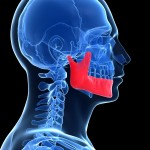
While degenerative joint disease mainly affects the load-bearing joins of the body it can affects other joints including the temporomandibular joint. It may be a local condition osteoarthritis or part of a systemic condition. New diagnostic criteria for temporomandibular disorders considered the terms osteoarthritis and osteoarthrosis to denote subclasses of degenerative joint disease.
The main aim of this review was to assess the prevalence of degenerative joint disease (DJD) of the temporomandibular joints (TMJ).
Methods
Searches were conducted in the LILACS, LIVIVO, PubMed, Science Direct, SCOPUS, Web of Science. Google Scholar, OpenGrey, and ProQuest databases. Studies that reported the prevalence of DJD of the TMJ, assessed by clinical examination and imaging were considered. Two reviewers independently selected studies extracted data and assessed risk of bias using the Joanna Briggs Institute Critical Appraisal Checklist for Studies Reporting Prevalence Data. Disagreements were resolved by a third reviewer. Studies were grouped into 2 pools based on pathogenesis, group 1 included rheumatic diseases, group 2 temporomandibular disorders (TMD). Meta-analysis was not conducted.
Results
- 32 studies from 16 different countries were included.
- Sample sizes ranged from 15 – 3435 patients.
- 13 studies reported on prevalence of DJD in TMJ secondary to rheumatic systemic diseases (juvenile idiopathic arthritis [JIA], rheumatoid arthritis [RA], Marfan’s syndrome, ankylosing spondylitis, spondyloarthropathy, and mixed connective tissue diseases)
- 19 studies investigated the prevalence of DJD among patients with TMD in different populations
- Only 6 studies were classified as being at low risk of bias, 9 were at high risk and the remainder at moderate risk.
| Patients with | Prevalence of DJD Range |
| JIA | 40.42% to 93.33% |
| RA | 45.00% to 92.85% |
| TMD | 18.01% to 84.74% |
Conclusions
The authors concluded: –
This systematic review showed high prevalence for DJD of the TMJ in patients with JIA and in patients with RA. In addition, a significant prevalence ranging from was observed among patients with TMD. Both specialist doctors and dentists should be alert to not underestimate and to correctly diagnose DJD of the TMJ early in patients with rheumatic disease and TMD.
Comments
While a broad search strategy was employed for this review only 6 of the 32 included studies were considered to be at low risk of bias. The assessment of bias questions also indicates that in only 9 studies was the assessment of the condition considered to have been measured reliably. Sample sizes in some of the included studies are small and as the authors point out are subject to selection bias as all of the included studies have used convenience samples. Because of high levels of heterogeneity between the studies meta-analysis was not presented so prevalence ranges were provided. These suggest high prevalence of DJD in patients with JIA and RA although the ranges for these and patients with TMD are wide. Because of the limited quality of the studies the findings should be interpreted cautiously.
Links
Primary Paper
Pantoja LLQ, de Toledo IP, Pupo YM, Porporatti AL, De Luca Canto G, Zwir LF,Guerra ENS. Prevalence of degenerative joint disease of the temporomandibular joint: a systematic review. Clin Oral Investig. 2018 Oct 11. doi:10.1007/s00784-018-2664-y. [Epub ahead of print] PubMed PMID: 30311063.
Original review protocol on PROSPERO
